CSR commitments do pay off finds new study


A new study has identified three common factors that ensure CSR adds to a company’s bottom line.
Academics reviewed 163 research papers from top-tier journals published from 2000 to 2014 on the link between CSR and company performance.
In A Review of the Nonmarket Strategy Literature: Toward a Multi-Theoretical Integration published in the Journal of Management, Kemal Mellahi, of Warwick Business School, Jedrzej Frynas, of Middlesex University, Pei Sun, of Fudan University, and Donald Siegel, of University at Albany SUNY, argue the proper use of CSR can improve a company’s performance and so ensure that by doing good they also do well.
Professor Mellahi said: “It is clear that the results are far from consistent. A lot of firms haven’t found the sweet spot of doing well while doing good at the same time. More than one third of CSR studies did not find a positive relationship between CSR and performance. Several studies found that CSR actually has a negative impact on performance. But some interesting trends can be observed.”
The study identified three factors that moderate the impact of CSR on performance.
First, in order for CSR to pay-off, the organisation must be able to adapt and align its CSR activities with the concerns of key stakeholders. It must have the capacity to influence stakeholders by having the ability to “to identify, act on, and profit from opportunities to improve stakeholder relationships”.
Secondly, communicating a company’s CSR activity is another important factor. Professor Mellahi added: “The visibility of CSR is very important. While managers are right to worry about self-promoting and publicising their CSR activities as they can be seen as ‘goodwashing’ or ‘greenwashing’, they need to be transparent about what they are doing, where the investment is going and the impact it’s having.”
The third factor is that the CSR must be consistent with what the organisation does, it needs to be committed to CSR.
Professor Mellahi said: “CSR may backfire if the firm is accused of hypocrisy, where it boasts about its CSR achievements in one area while acting irresponsibly in another.”
The study also highlights the potential negative impact of CSR initiatives when they are driven primarily by a manager’s ego or personal concerns. Business leaders who engage in CSR activities to boost their personal reputation and advance their personal career may hurt the bottom line.
“If an organisation’s CSR is just an indulgence of the CEO then it produces a negative effect on performance,” said Professor Mellahi. “Managers are most likely to support and be loyal to social or political stakeholders to which they are most closely tied and so devise their CSR around them. This is not good for the organisation’s performance though and can alienate other stakeholders.”
Professor Mellahi added: “When managers are driven by self-serving motives they tend to spend an exceedingly large amount of resources on initiatives without a clear strategy or visible results.”
Pernod Ricard steps up measures to promote responsible drinking


Absolut vodka and Beefeater gin maker Pernod Ricard is extending its Wise Drinking programme by gradually adding, as inventories are renewed, the address www.wise-drinking.com to the back labels on all its bottles, across its entire brand portfolio.
When connecting to the page www.wise-drinking.com, consumers will be redirected to the responsible drinking site for the country in which they are located or, if the country does not have one, to the IARD (International Alliance for Responsible Drinking) site.
In the UK, for example, the page redirects to the responsible prevention website www.drinkaware.co.uk/ which provides the public with information on maximum consumption levels of alcohol recommended, by defining a unit of alcohol, and offering information on the effects of alcohol consumption and instances in which abstinence is advised.
The Wise Drinking programme already includes a mobile application, available in 37 languages, intended to provide real time checks on the amount of alcohol consumed and tailored to each country’s legislation.
As the Christmas and New Year celebrations approach, company affiliates are conducting a number of awareness raising campaigns to avoid excessive consumption. For example, Pernod Ricard’s Canadian affiliate, Corby Spirit and Wine Ltd, has joined forces with the public transport provider, Toronto Transit Commission, to offer Toronto residents free and safe transport on New Year’s Day. Last year, 225,000 people took advantage of the #CorbySafeRides campaign which was widely publicised via social media and billboards.
Scientists React to Paris Agreement


Sometimes, in the midst of all the politicians, negotiators and, yes, media, we forget that the whole reason that world leaders gathered at COP21 in Paris is due to, well, science. If there is one thing we should also be able to agree on, it is that we need an agreement based in scientific reality, because only then can we avoid the worst of climate change.
Fittingly, there were several scientists gathered at COP21. They were outspoken about the final agreement, and mostly applauded the inclusion of a below 2 degrees Celsius target in the latest draft text.
"If agreed and implemented, this means bringing down greenhouse gas emissions to net zero within a few decades," said said Hans Joachim Schellnhuber, director of the Potsdam Institute for Climate Impact Research. "It is in line with the scientific evidence we presented of what would have to be done to limit climate risks such as weather extremes and sea-level rise."
Right now, the main mechanism for reducing emissions are countries' Intended Nationally Determined Contributions (INDCs), which leave us far short of the 1.5-degree goal that scientists and many vulnerable developing countries are pushing for. We need stronger, short-term action, said Steffen Kallbekken, research director at Cicero:
“By the time the [INDCs] enter into force in 2020, we will have probably exhausted the entire carbon budget for the 1.5-degree target.”
Another area of concern was the removal of the 70- to 90-percent emissions reduction target and the inclusion of the term “greenhouse gas neutrality,” which some scientists fear opens the door for unproven carbon-capture technologies and the counting of carbon sinks, such as forests, in carbon accounting.
“[The current text] has no reference to levels of carbon peaks, no reference to fossil fuels in text, and the language of neutrality [assumes] we can suck massive amounts of CO2 in the future,” said Kevin Anderson, deputy director of the Tyndall Center for climate change research.
“We should do research on geoengineering, but should only develop policy assuming that it does not work.” Geoengineering – which is still unproven – should not be assumed, and we don’t need it. The progress of renewables in countries like Germany, China and, increasingly, the United States is showing that strong action can reduce emissions. We just need to scale up – fast.
Science can help do that – but in partnership with businesses and civil society. That's what Johan Rockström, executive director of the Stockholm Resilience Center, argued for.
“Future COP meetings should allow for real assessment of INDCs, and take business, science and civil society together in revising agreements and monitoring our global set targets for the future of humanity.”
“It is incredibly positive that world political leadership has recognized the science – and put targets to stay within 1.5 degrees. Now we just have to operationalize it,” Rockström continued. “The top scientific goal is to really limit our warming to below 2 degrees – as far from that as possible.”
And it won’t be just up to governments. Businesses are increasingly calling for a stronger climate framework to help make long-term decisions. The agreement can be a starting ground for this – even if it's not up to par with the standards of science.
“This text will be a narrative, but it will be the job of businesses, cities, consumers and investors to finish the job. The divestment movement, in particular will be crucial in this,” Schellnhuber said.
One key point in the new agreement is a new assessment, by 2018, on the impacts of a 1.5 degree warming. When released, this could spur greater commitments in INDCs and push businesses to do even more to reduce emissions.
Paris is not the end, but really, the beginning.
Photo credit:
Zuckerberg Will Donate 99 Percent of Facebook Shares to Charitable Causes

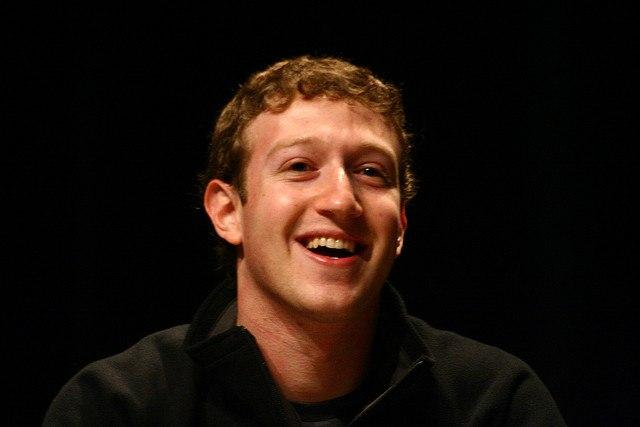
Mark Zuckerberg, the co-founder and chief executive of Facebook, has already changed the world we live in. Now he wants to change the world for future generations, too. He and his wife, Dr. Priscilla Chan, recently announced that they would give 99 percent of their Facebook shares, worth more than $45 billion, to charitable purposes.
The pledge was made in an open letter to their newborn daughter, Maxima Chan. “Having this child has made us think about all of things that should be improved in the world for her whole generation,” Zuckerberg said in a video. “We need to make sure that there are investments in the programs that ensure that the future will be better than it is today,” Chan added. “We have a basic moral responsibility to tilt our investments as a society and as individuals."
The mega-billionaire, husband-and-wife team has formed a new organization, the Chan Zuckerberg Initiative, to manage the fund. However, instead of going the more traditional route of setting up a foundation or nonprofit organization, the Chan Zuckerberg Initiative is set up as a limited liability company. They plan to go beyond making philanthropic grants to investing in companies, lobbying for legislation and influencing public-policy debates.
The LLC will enable the couple to invest in projects of their choosing without being constrained by pesky charitable restrictions. As opposed to a nonprofit, an LLC can invest in for-profit (albeit socially responsible) companies, make political donations and can lobby for changes in the law. At the same time, the designation allows them to do as they wish with their money without all of the additional oversight.
The Internet’s reaction to this news was mixed. While many praised Zuckerberg for his generosity, many accused him of simply transferring money from one hand into the other. Some commentators praised the size and percentage of the gift; others pointed out that Mr. Zuckerberg might be too young to be planning to give his wealth away.
One article published by Bloomberg claims that Mark Zuckerberg’s philanthropy pledge sets a new giving standard. Joining the ranks of fellow billionaire benefactors Warren Buffet and Bill Gates, Zuckerberg is starting to give away his wealth much earlier, at age 31.
“The example you’re setting today is an inspiration to us and the world,” Mr. Gates and his wife Melinda said to Mr. Zuckerberg and Dr. Chan in a statement. “We can be confident of this: Max and every child born today will grow up in a world that is better than the one we know now. As you say, ‘Seeds planted now will grow.’ Your work will bear fruit for many decades to come.”
As if his philanthropic efforts weren’t ambitious enough, Mark Zuckerberg might also be going after the title of Dad of the Year. In the swirl of subsequent media coverage, he posted a photo to his Facebook page which may soon eclipse his pledge to donate his 99 percent of his fortune.
The image, which the Facebook founder and CEO captioned, “One more down, thousands to go,” showed him changing the diaper of his newborn daughter. The photo, which has received nearly 2 million likes, and 44,000 comments, has been dubbed “the most liked diaper change ever." This wondrous act prompted some publications to say that he is setting “a bold example,” and had stories naming him “the most adorable dad” and even “dad of the year.” While some have deemed the new dad’s efforts “very impressive,” a “good example” and “a miracle,” others are questioning if the photo would have the same impact if it were posted by a woman.
Also, although Zuckerberg donating 99 percent of his profits is a very laudable idea, it certainly sheds light on the tremendous income gap between the super rich and everybody else in this country. Mark Zuckerberg and Dr. Chan can afford to give away 99 percent of their Facebook shares ($45 billion) by the end of their lifetime, and have plenty of other assets to live in comfort. Meanwhile, the vast majority of Americans are either living in poverty or paycheck-to-paycheck and struggling to save up enough to retire.
Only time will tell what this will mean for the rest of us. The couple’s initial areas of focus will be causes that address personalized learning, curing disease, connecting people and building strong communities. “Our hopes for your generation focus on two ideas: advancing human potential and promoting equality,” the couple stated in their open letter. “The only way that we reach our full human potential is if we’re able to unlock the gifts of every person around the world.”
Image credit: Flickr/PROJason McELweenie
Climate's Impact on America's Poor

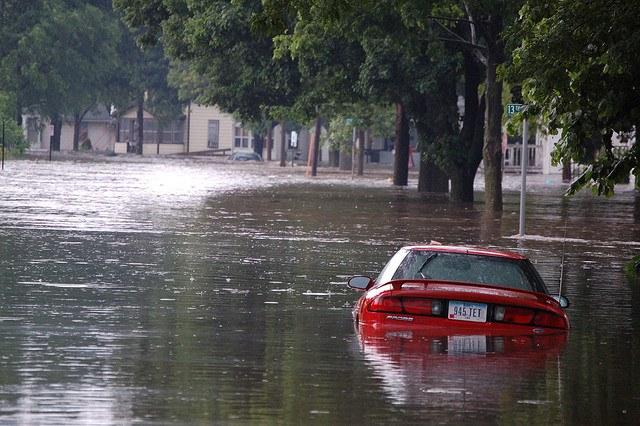
By Shravya Jain
As world leaders celebrate accord in Paris about the next climate-fighting regime, I have been contemplating the addition of climate change as a major contributor of instability to the lives of poor people in the United States who already struggle with eroding safety nets and increased income uncertainty.
Climate justice rightfully focuses on low-income nations who have a significantly lower carbon footprint and yet are more vulnerable to the effects of climate change than their wealthier counterparts. It's important however that we look at the populations most likely to suffer in all countries.
Low-income citizens in the United States often live in areas more likely to experience extreme weather events; they also have a reduced facility to adapt and be resilient. These communities' disadvantages can range from the seemingly innocuous, such as a lack of access to air conditioning or a car, to more substantial ones such as loss of property to flood or complete collapse of a community.
In United States, studies have shown that Superstorm Sandy hit poor residents disproportionately hard and led to a spike in the unemployment rate. The impoverished victims of Hurricane Katrina continue to suffer, 10 years after the disaster. Weather events such as droughts and intensified heat waves leave poor communities extremely vulnerable as well. In California, for example, the Center for American Progress noted that communities of color and the poor from tribal, rural and farming communities have suffered the most since 2012. The article explains:
"Low-income communities and communities of color are most vulnerable to the effects of climate change due to poor-quality housing and infrastructure, proximity to environmental hazards, and economic instability. Because these communities have been institutionally excluded from accruing wealth and assets — which are prominent indicators of a family’s ability to prepare for unexpected shocks — they are less able to survive and recover from disastrous events."
In November, the global concentration of carbon dioxide reached 400 parts per million for the first time in recorded history, and it’s possible they won’t be back below that level again in our lifetimes. The poor are simply not prepared to add another adversity to their already difficult lives, and it’s the humanitarian duty of politicians and everyone else to fight for a global agreement that addresses climate issues and aids their transition out of poverty.
According to an EPA report, in the absence of a global policy to curb climate change, there could be 12,000 deaths annually associated with extreme temperatures in the United States. Mitigation policies could also result in $200 billion in savings to the American economy by 2100.
The past decade has already provided a peek at things to come. Environment America’s Weather Map reveals that 96 percent of Americans live in counties that have been hit by weather disasters in the last five years. Anna Aurilio, director of Environment America’s Global Warming Solutions program, says:
"We used to think of climate change as a problem that would happen someday, somewhere. But sadly, our extreme weather map shows that global warming is happening now, and it’s already hitting close to home."
The global agreement reached at the United Nations climate summit (COP21) in Paris hopefully will cement the existing efforts by the United States to reduce its greenhouse gas emissions and help mitigate the effects of climate change. Equally importantly, it could become a catalyst, as it has already begun to be, for state-wide and city-wide action. And finally, it might help push businesses, investors, philanthropists and others to contribute to climate action.
There are already calls for the investors to move into fossil-free funds, divest from fossil fuel stocks, and finance companies that receive higher ratings in environmental, social and governance (ESG) metrics. Heron’s investee, the Sustainability Accounting Standards Board (SASB), is working to develop reporting standards to inform investment decisions along ESG metrics. Meanwhile, Heron investees such as Habitat for Humanity and PolicyMap promote resiliency by providing affordable housing to low-income families and provide policymakers mapped data to base their adaptation and resiliency efforts on. I am hopeful this will be the beginning to greater investment in climate action.
Image credits: 1) Flickr/U.S. Geological Survey 2) National Climatic Data Center
Shravya Jain is a knowledge and influence intern at the Heron Foundation.
Climate Denial Funding is Decreasing


Climate change denial is waning in popularity. The Committee for a Constructive Tomorrow (CFACT), a climate change denial group, lost over two-thirds of its funding over the last two years. The Center for Media and Democracy (CMD) reviewed tax filings for the group. The CFACT tax filing for 2014, filed in late 2015, reported that the group received grant revenue of $1.5 million, a decrease from $2 million it reported receiving in 2013. In 2012, CFACT reported receiving $5.5 million.
CFACT was founded in 1985 “to promote a positive voice on environment and development issues,” the organization’s website states. CFACT has received funding from fossil fuel companies, including ExxonMobil. However, that funding seems to have dried up. A big reason is that ExxonMobil is facing possible lawsuits and criminal penalties. New York Attorney General Eric T. Schneiderman started investigating whether ExxonMobil lied to the public or investors about climate change risks. Last month, Schneiderman issued a subpoena to the company to hand over financial statements and other documents, the New York Times reported.
Back in the early ‘80s, ExxonMobil not only acknowledged that carbon dioxide from fossil fuels would increase global temperatures, but also researched how it would impact the planet. However, by 1997, the company’s then-CEO Lee Raymond spoke out against the Kyoto Protocol, as an Inside Climate News investigation revealed. “It is highly unlikely that the temperature in the middle of the next century will be significantly affected whether policies are enacted now or 20 years from now,” Raymond said.
In the 1990s, a shareholder petition asked ExxonMobil to develop a carbon emissions reduction plan, according to a Los Angeles Times investigation. The company’s board responded that its “examination of the issue supports the conclusions that the facts today and the projection of future effects are very unclear.” However, the company’s own researchers and engineers were “quietly incorporating climate change projections into the company’s planning and closely studying how to adapt the company’s Arctic operations to a warming planet,” the Los Angeles Times reported.
The days when a fossil company like ExxonMobil can practice and fund climate change denial are clearly over. The majority of Americans (70 percent) believe there is solid evidence of climate change during the last four decades, a recent poll revealed. That is the second highest level of belief in climate change in the history of the National Surveys on Energy and the Environment (NSEE), falling short of the 72 percent mark in a fall 2008 poll.
Even some Republican lawmakers believe in human-caused climate change. In September, 11 House Republicans signed a resolution recognizing the role of humans in climate change. Led by Rep. Chris Gibson (R-N.Y.), the resolution expressed that the House “commits to working constructively, using our tradition of American ingenuity, innovation and exceptionalism to create and support economically viable, and broadly supported private and public solutions to study and address the causes and effects of measured changes to our global and regional climates.”
“All too often, the conversation about appropriate and balanced environmental stewardship gets caught up in partisan politics,” Rep. Gibson said in a statement. “Yet, this conversation is key to the preservation of our great country for generations to come, as important as ensuring we have fiscally responsible policies to secure our future.”Perhaps Americans are leaving climate change denial behind because they are witnessing its effects. From devastating droughts and wildfires in the West to hurricanes in the Southeast, the U.S. is seeing increasingly extreme weather events. A majority of Americans believe climate change made extreme weather events in 2011 worse, according to a report by the U.N.’s Intergovernmental Panel on Climate Change (IPCC). Those extreme weather events included the Mississippi floods, high summer temperatures, and drought in Texas and Oklahoma. In other words, Americans see what is occurring and are making the connection to climate change.
Photo: Flickr/Development Planning Unit University College London
Millennials Are Changing Philanthropy
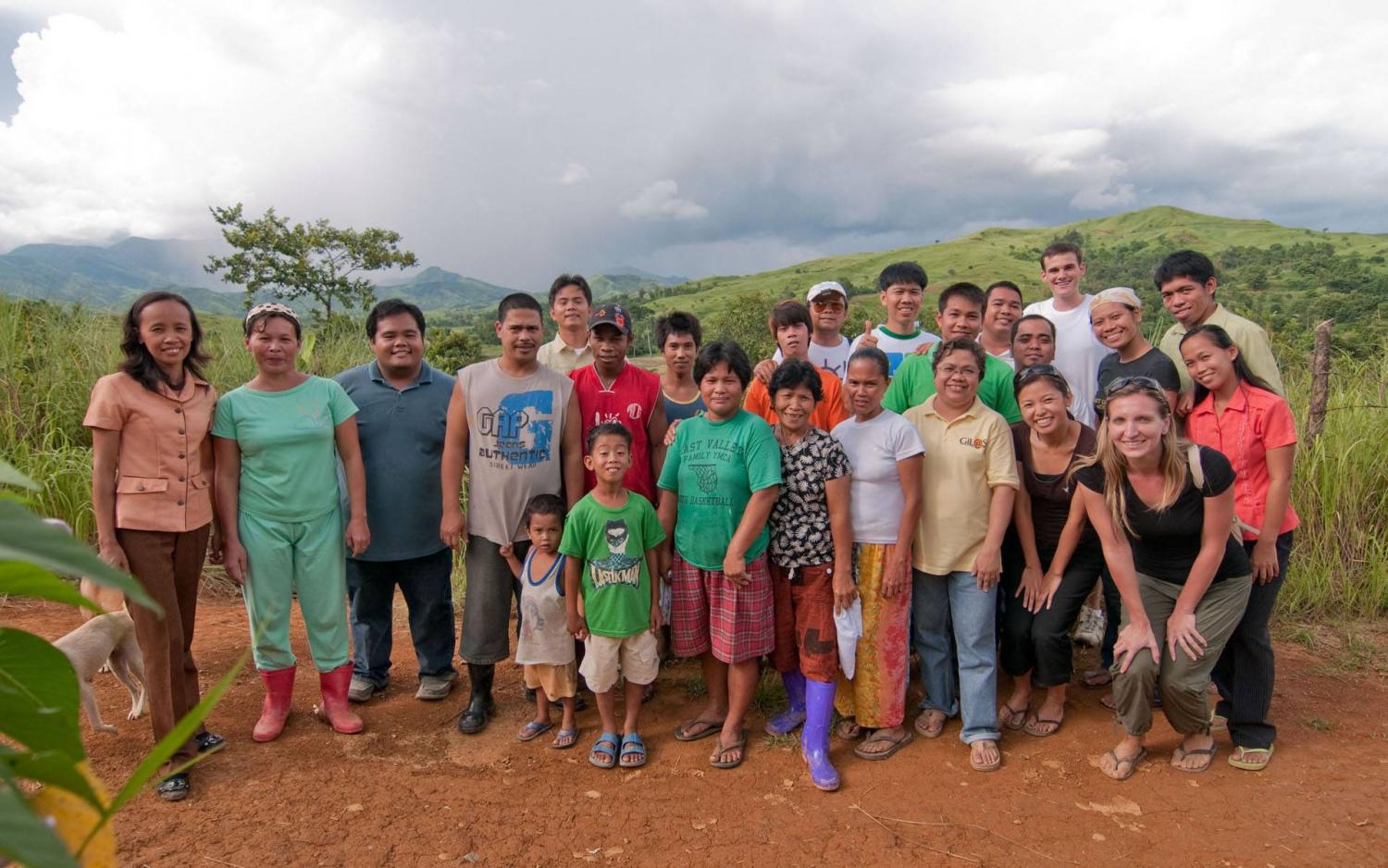

By Abbie Jung and Jana Svedova
In Hong Kong’s hyper-competitive society, Type A achievers take any opportunity to one-up their peers, even in philanthropy. The glut of black-tie gala dinners, happy hour fundraisers, bartending events, auctions and marathons offer ample opportunities for donors to feel good about themselves and get recognition for their financial contributions toward social good.
A group of young local and expat millennials don’t think you can save a rainforest in one happy hour. They choose a different way to incite change.
The Future Funders Giving Circle is made up of six young professionals, all under 40 years old, who dedicate time, professional skills, knowledge, network, influence and capital to help thinly-stretched social ventures develop their businesses and grow their impact.
Organized by Synergy Social Ventures, a nonprofit that invests in early-stage social ventures, participants attend boot camps where they learn about social enterprise and philanthropy, including Synergy’s due diligence and venture support processes. The group uses the process to vet and invest in a venture. In addition to financial support, they use business and finance skills honed in the private sector to provide entrepreneurs with hands-on help.
Four of the Future Funders are finance professionals, while the others work in corporate finance and business sustainability consulting. All of them work 80-hour weeks, travel internationally several times a month and barely have time for dentist appointments. Still, they meet at least once a month to discuss social enterprise and developing social-change models.
Future Funders started with Dawei Wang and Lori Ngo, two finance professionals who heard about giving circles from a friend but didn’t find any in Hong Kong. Instead, they started volunteering with Synergy Social Ventures, providing hands-on professional support for social ventures in the Synergy portfolio.
When co-founder Abbie Jung shared Synergy’s newly-formed experiential philanthropic education program, the young couple went all-in. They committed $10,000 and volunteered hours on top of their already hectic work schedules.
Despite their desire to plunge head-first into philanthropy, neither came from charitable families.
“Both our families are first generation immigrants and, frankly, there’s is not a sense of ‘give back to the community’ because they went through a lot to get to where they are. They really internalized all the resources to support the next generation,” Wang says.
The couple’s thinking shifted dramatically during their honeymoon in Cambodia. A villager approached them asking for English lessons so he could find a job. At that moment, they realized throwing money at poverty isn’t the solution. People are self-determined and want to create a sustainable future for themselves and their families. They realized the best way to help these villagers is to provide jobs and support other ways people could provide for themselves.
“As we were growing up, particularly as we travel, we feel the world is not a place where there’s an equal distribution of wealth and opportunities. So, the more we see, the more we realize that our parents were from a different generation and we have to think differently.”
Unlike the usual fly-by philanthropy in Hong Kong, where donors learn about the issue from a video that plays at the end of the gala, the Future Funders program challenges its’ members to dig deeper, understand organizational challenges and connect with social entrepreneurs actually solving those problems.
After a full year of strategy bootcamps and debates, the Future Funders’ first $50,000 co-investment with Synergy went to support a business development manager for Brooklyn Bridge to Cambodia (BB2C), a Phnom Penh-based social venture that develops and manufactures treadle water pumps designed for rural subsistence farmers in Cambodia. These pumps decrease the time farmers, often women and children, spend watering their field and enable them to grow higher-value crops in the dry season.
https://www.youtube.com/watch?v=RRy5rZ3ymxE
“We saw more of their day-to-day. We saw Bunika [a BB2C staffer] going to the field two, three, four times a day,” Ngo says. “When meeting the people behind the ventures, it wasn’t just the commitment; it was the energy and enthusiasm that they had. Everyone that we met working as part of these organizations were very, very enthusiastic, no matter what they did.”
It’s unusual to use a grant to cover administrative expenses. Most grants support program related expenses, while impact investments tends not to give grants at all. Future Funders believe in using intimate, first hand knowledge to provide tailored help investees can use to achieve the social impact they are trying to create.
They believe the new Business Development Manager will increase sales through distribution partnerships, help farmers increase production and use BB2C profits to develop new agricultural technology products that can improve the lives of rural farmers in and around Cambodia.
“It’s is a chance you have to take based on the people, product, and your belief that it will make an impact,” Ngo explained.
Image and video courtesy of Future Funders Giving Circle
3 Ways Asset Sharing Can Positively Impact Your Business
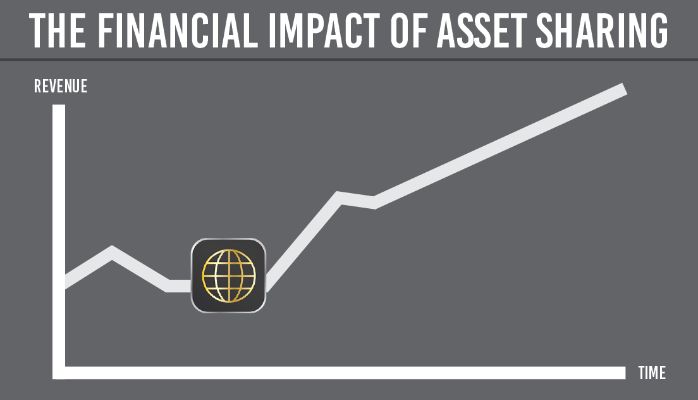

By Kim Tjoa and Egbert Willekes
Over the last few years, the sharing economy has gained immense popularity and is projected to create an even bigger impact in the near future. Not only consumers can join this movement. Quite frankly, the success of businesses will start to be characterized by the more efficient use of company assets through sharing. Why? Because there are three significant advantages to asset sharing that are hard to pass up. Businesses improve their sustainable impact, enhance their social position and reap major financial benefits.
Financial benefits? Definitely. Companies are able to save costs when they rent or borrow from each other instead of making investments when purchasing equipment or hiring personnel. Additionally, they are able to generate additional income by (temporarily) renting out assets. Let's take a closer look at the financial benefits that asset sharing brings for any business or organization
1. Impact on cash flow
When you share your underutilized equipment, personnel, facilities or services, your business will benefit from an additional operation cash flow, created by the rental or sales of the assets that aren't optimally being used. If you choose to use assets from colleague businesses, you will lessen your capital expenditure, leaving you with a larger cash flow for alternative investments.
2. Impact on income statement
When you share your assets, your business will also benefit from an additional line item on your income statement: "revenue from underutilized assets." But that’s not all. When you engage in the sharing of assets with fellow businesses, you will need less capital, expenditure, which will result in reduced depreciation of fixed assets. The rent for using shared assets will be much lower than the corresponding depreciation.
3. Impact on balance sheet
Sharing your company assets will also lead to a smaller risk of the impairment of your assets, as sharing leads to higher future cash flows from the rental or sales of these assets. According to the International Financial Reporting Standards (IFRS) and most local Generally Accepted Account Principles (GAAP), impairment testing is required, often leading to a write-off of a company's assets. Additionally, renting or borrowing equipment from fellow companies could increase solvability, as it shortens your balance sheet while it also increases your equity.
Positive impact on the cash flow? Check. Positive impact on the income statement? Check. Positive impact on the balance sheet? Check. Asset sharing creates better financial ratios and leaves more room for other investments. Starting a new business without big investments? It's possible with asset sharing. Even better, no big investments are needed to get asset sharing off the ground within your organization. Think about it ...
Just like all major changes, the switch to asset sharing will not be easy. The management team has to be on board, and an organization has to be ready, willing and know how to embrace this new addition to their business. It will be the task of, for instance, procurement or facility managers to think along with the executives, advise them and implement it into the core business. Want to learn more about how your facility management department can join the movement? Check out in this article.
Image credit: FLOOW2
Kim Tjoa is co-founder of FLOOW2 World’s Reset Button, the leading sharing marketplace for businesses and organizations.
Egbert Willekes is lecturer Finance for the International Financial Management & Control (IFMC) program at The Haque University of Applied Sciences.
COP21, the Paris Agreement and the Art of the Possible
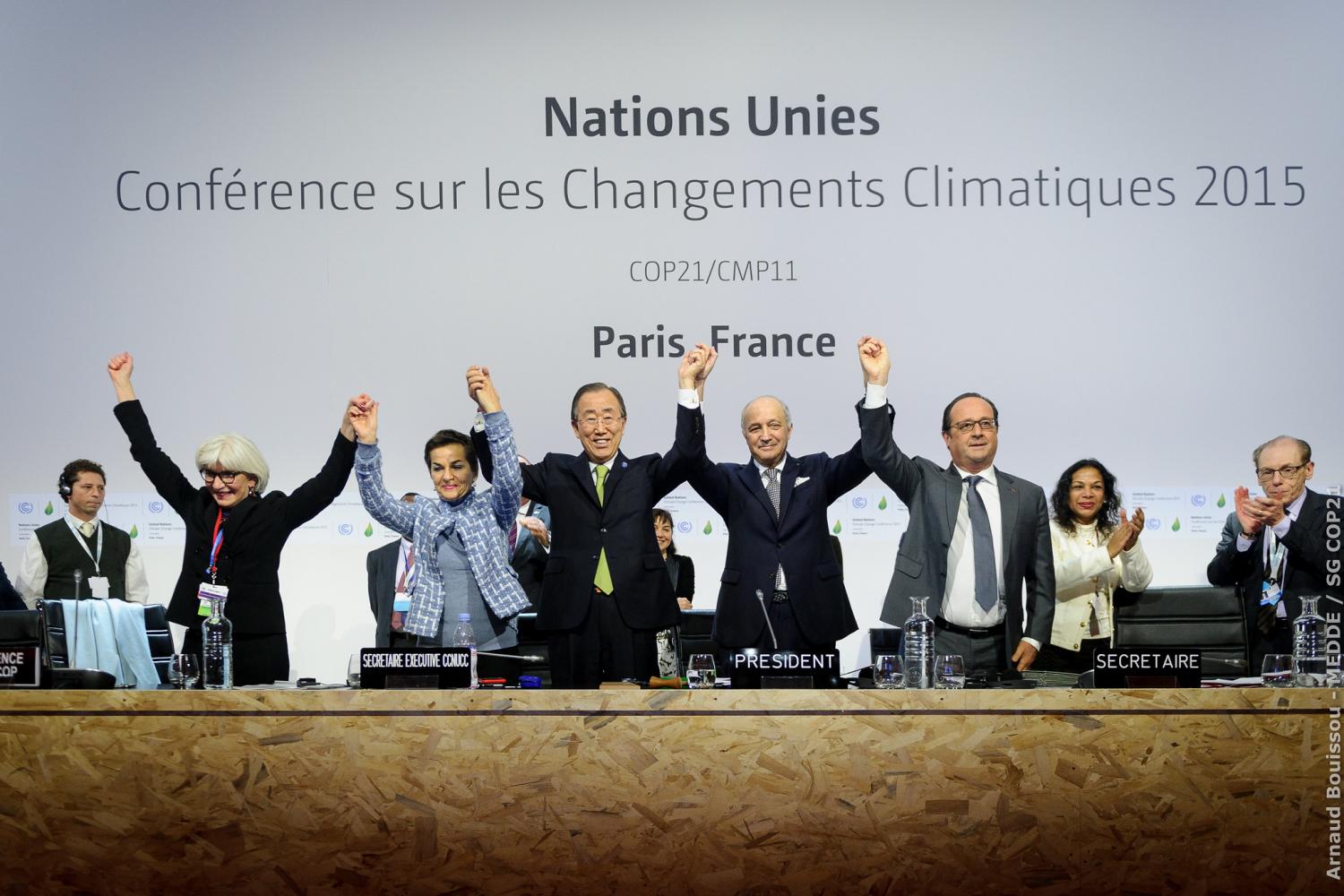

"Recognizing that climate change represents an urgent and potentially irreversible threat to human societies and the planet and thus requires the widest possible cooperation by all countries, and their participation in an effective and appropriate international response, with a view to accelerating the reduction of global greenhouse gas emissions."
- Preamble to the Paris Agreement, Dec. 12, 2015
To answer a question posed last on TriplePundit last week -- yes, in the end, COP21 can and did exorcise the ghosts of Copenhagen. On Saturday evening Paris time, COP21 President Laurant Fabius gaveled to a close an historic moment for humanity. With that gavel came adoption of the final draft of the Paris Agreement, a global deal by nearly 200 nations to address climate change.
The agreement sets into motion the shared realization of the urgency of the problem, the need for cooperative action to mitigate and adapt to climate change, and signals that the end of the fossil fuel economy is inevitable.
Key points of the Paris Agreement
In broad strokes, the Paris Agreement establishes a long-term goal of net-zero emissions, a mechanism to review progress and increase ambition at regular intervals, and a framework for climate finance.
Mitigation, transparency: The long-term signal in the Paris Agreement is for countries to peak their emissions "as soon as possible" and achieve "net-zero" greenhouse gas emissions by the last half of the century. At the heart of the Paris agreement are the INDCs, or national commitments, from 186 nations comprising 90 percent of the world's greenhouse gas emissions.
As most realize by now, even with this unprecedented commitment, we are on a probable path toward at least a 2.7 degrees Celsius global average temperature above pre-industrial levels. This doesn't match the goal of limiting global warming to "well below" 2 degrees, or even to 1.5 degrees Celsius. Indeed, some scientists suggest that 1.5 degrees is already "baked into the system."
The next key element of the agreement, therefore, is a legally-binding mechanism for countries to "ratchet up ambition" at regular five-year intervals starting in 2020. Countries will review their commitments in 2019, encouraging them to increase their current 2030 commitments.
Once the agreement is in force starting in 2020, each country is required to submit a subsequent round of targets every five years. Starting in 2023, a "global stocktake" mandates countries to report in five-year intervals on how their actual emissions reductions compare with their submitted plan.
Climate finance, adaptation, loss and damage: Developed countries agreed in Copenhagen to provide $100 billion annually in financial assistance by 2020 for developing countries to adapt to climate change and reduce emissions while growing their clean energy economies. The Paris Agreement acknowledges this $100 billion as a "floor" for climate finance to be reviewed and increased "before 2025."
The agreement addresses loss and damage as an issue separate from adaptation, making permanent the Warsaw International Mechanism established at COP19 to formally address loss and damage. The loss and damage provision in the agreement does not create any "new legal liability" for high emitting countries.
The agreement balances public funding between mitigation and adaptation, increasing pre-2020 support for adaptation for the most vulnerable countries already suffering the impacts of climate change.
The art of the possible
Calling for a "complete decarbonization" of developed economies by 2030, scientists at a press conference on Friday expressed concern that the language in the Paris Agreement does not "operationalize" the aspirational language of net-zero emissions. In the view of many scientists, the agreement falls well short of maintaining what the executive director of the Stockholm Resilience Center, Johan Rockström, calls a "safe space" within planetary climate boundaries.
When asked to comment on these concerns, Andrew Deutz of the Nature Conservancy told TriplePundit that he "sympathized with the scientists" but pointed to the bigger political reality in play at COP21
"In order to understand the climate process, you've got to be somewhat bipolar," Deutz said. "Because one hemisphere of your brain has to look at the science and say, 'We are desperately behind where we need to be; we need rapid decarbonization across all sectors of the economy if we're going to keep the climate in a safe space.' The other side of your brain is saying, 'Look where the politics are; look at the progress that we're making,'
"We now have the world's most comprehensive and ambitious set of emissions reductions commitments on the table that we've ever seen: huge political progress ... a political transformation"
If the current goals set forth in the agreement do not yet reflect the required levels of ambition, there is, for the first time ever, the expressed political will to start the process.
"This isn't just about climate change," Deutz said. "This is about the world's ability to demonstrate cooperation in the face of a global challenge."
Popping champagne corks in Paris
After a long, grueling process of negotiations and many sleepless nights, delegates and ministers had reason to celebrate in Paris on Saturday night. COP21 will be remembered as an inflection point in the human response to climate change.
But the celebration must be tempered with a sober assessment of how far we have yet to go to realize the aspirations of Paris. As Deutz said, "The next day [after COP21], we have to roll up our selves and desperately catch up to where we need to be"
Indeed the great accomplishment in the Paris Agreement is not how it "solves" climate change, but rather how it binds nations together in an internationally agreed upon framework to work toward the solution. It is, as one delegate from the EU said, "the art of the possible."
Image credit: COP Paris/Flickr
Climate Health, Indigenous Land Rights Are Linked: COP21 Report
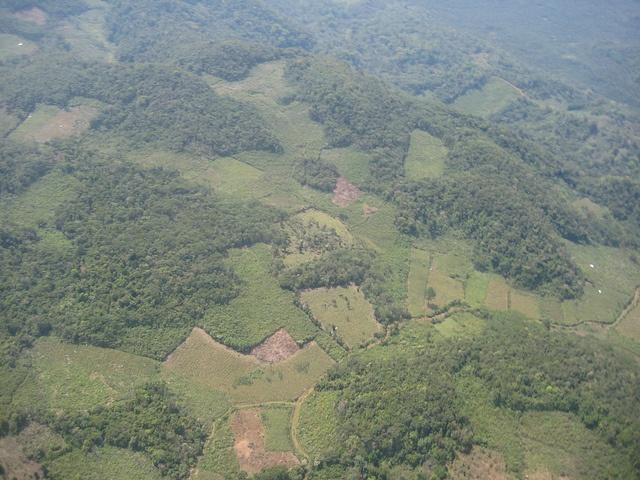

The world’s indigenous populations hold an important tool to combating climate change, say researchers, and that tool is trees.
At least 20 percent of the carbon stored above ground lies on aboriginally-owned land in the form of tropical forests that have long been protected by their residents. And those forests are some of the world’s last natural vestiges when it comes to offsetting carbon emissions. Trees serve as natural scrubbers to the earth’s atmosphere, offsetting as much as a quarter of the carbon we dump into the atmosphere each year.
This interrelationship between indigenous peoples and their ancestral lands “demonstrates the historical role indigenous territories have played in conserving these forests and their potential for addressing a key challenge in the long term maintenance of climate stability: keeping those forests standing,” say the authors of a new report, released last week at the COP21 climate talks in Paris. The report was authored with the support of the Environmental Defense Fund and the Woods Hole Research Center.
The report suggested that more effort (and money) should be committed to aiding indigenous populations and incorporating their help in environmental stewardship. "What if these indigenous territories were to receive a third – or even a tenth – of the $9.8 billion USD committed to the climate mitigation policy now being negotiated to Reduce Emissions from Deforestation and forest Degradation (REDD+)?," the report's authors ask.
It's a bold, if not unconventional, answer to guarding against climate change, especially when considering that much of the threat toward the continuity of those forests these days is posed by regional governments through land regularization for urbanization, resource management (flooding for the purpose of creating dams and water resources) and, often, on the pretense of establishing national parks or other regional services.
The report calls on governments to address indigenous rights with a five-prong approach:
- Issuing titles for all unrecognized tribal territories
- Ending the persecution of aboriginal peoples
- Taking definitive steps to recognize the role that indigenous peoples play in combating climate change through their contribution to Intended Nationally Determined Contributions (INDCs)
- Establishing better frameworks that reinforce tribal rights to determine the future use of their lands
- Providing direct access to climate financing for indigenous communities
Interestingly, the report did not address poaching, or the illegal logging and harvesting of resources from indigenous lands, which continues to pose a threat to forest conservation in remote areas. In 2007, a University of Richmond researcher found a link between increased threats from poachers and 'land tenure insecurity,' or the absence of a clear acknowledgement of indigenous land rights.
"While illicit extraction does not only occur in Indigenous territories or in areas of tenure conflict, illegal hotspots often exhibit both traits. Land titling is not a magic bullet that can eliminate illegal logging, but it is an essential starting point," wrote Dr. M. Finley-Brook at University of Richmond's department of geography and environment. Her studies focus on land rights in the Central America.
In Brazil, the lands belonging to the Ka'apor tribe have been properly titled by the government, but vast tracks of the Amazon jungle are still at risk of deforestation. According to the Ka'apor tribe, that's because the government rarely polices the area, leaving the dense jungle of the Alto Turiacu at the mercy of poachers, who harvest the trees for sale on the international market.
The problem has forced the 2,000-strong tribe to take action into their own hands. Earlier this year, the once-remote tribe began confiscating illegal harvests, dismantling equipment, and physically rounding-up poachers and turning them over to the authorities. This fall, with the help of Greenpeace, the Ka'apor took another unconventional step: It went high-tech, installing remote surveillance sensors and cameras across the property that will help minimize violent encounters with poachers and hopefully, Greenpeace says, deter logging of ancestral lands.
https://www.youtube.com/watch?v=MoINeaiG0Fc
But even Greenpeace admits that the Ka'apor's trees won't be fully protected until governments take an active part in formally recognizing the rights and protection of indigenous land owners and their property. And doing so, say the authors of the latest report on indigenous forests, is in the best interest not only of aboriginal land owners, but the planet's health as well.
Images: 1) David Evers; 2) Alan Whelan/Trocaire; 3) Schuyler Erle